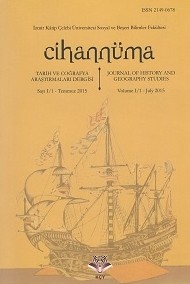II. Abdülhamid Dönemi İstanbul’unda Şii Kimliği ve Hüseyniye İnşa Girişimi
The Shi‘ī Identity and an Attempt to Construct Ḥosayniya in Istanbul during Abdulhamid II Era
Author(s): Güllü YıldızSubject(s): Islam studies, 19th Century, The Ottoman Empire
Published by: İzmir Kâtip Çelebi Üniversitesi, Sosyal ve Beşeri Bilimler Fakültesi
Keywords: Abdulhamid II; Istanbul; Shi‘ī community; Ḥosayniya; religious identity;
Summary/Abstract: Having a long history of presence in Istanbul, Iranians have appeared as a strong community commercially and culturally from the second half of the 19th century onwards. Institutionalization of the Iranian community in diverse fields like education and health effected on their religious life and brought out the construction process of a social identity simply based on the religion/sect. One of the most visible features of the Shi‘ī identity was the beginning to perform “Azādārī ceremonies” that take place publicly during the first ten days of the month of Muharram. This study deals in detail with the attempt of the Iranian community in Istanbul to build a “Takya Ḥosayniya”; “a temple for Azādārī”. This attempt that begins with the foundation of a council and aid fund for finance at the end of the year 1296/1879, is examined through the periodicals, memoires and travelogues published by the Iranian community in addition to the Ottoman archival documents. It aims to evaluate the meaning of this and other attempts of the Iranian community for the construction of a religious identity on the one hand and hand its accordance with Sultan Abdulhamid II’s religious policy on the other. Also it discusses the influence of the relationship between the Sultan and the Iranian ambassador of the time; Mu‘īn al-Mulk on this attempt.
Journal: Cihannüma: Tarih ve Coğrafya Araştırmaları Dergisi
- Issue Year: VII/2021
- Issue No: 1
- Page Range: 131-148
- Page Count: 18
- Language: Turkish

